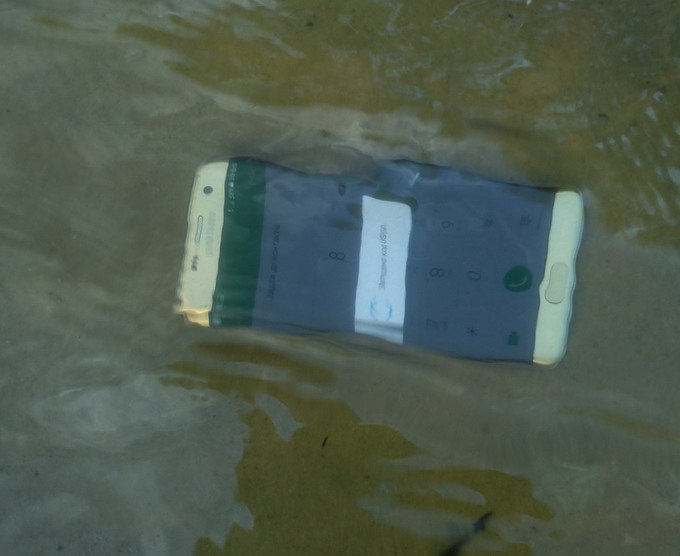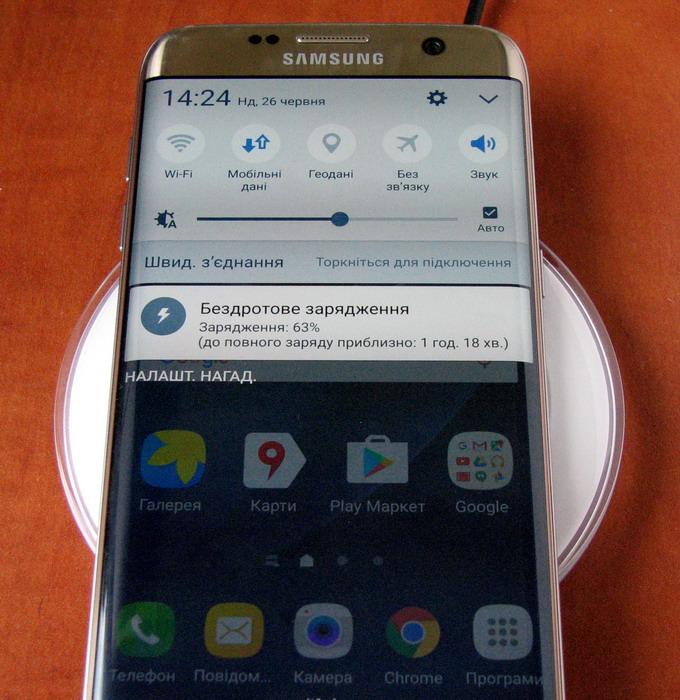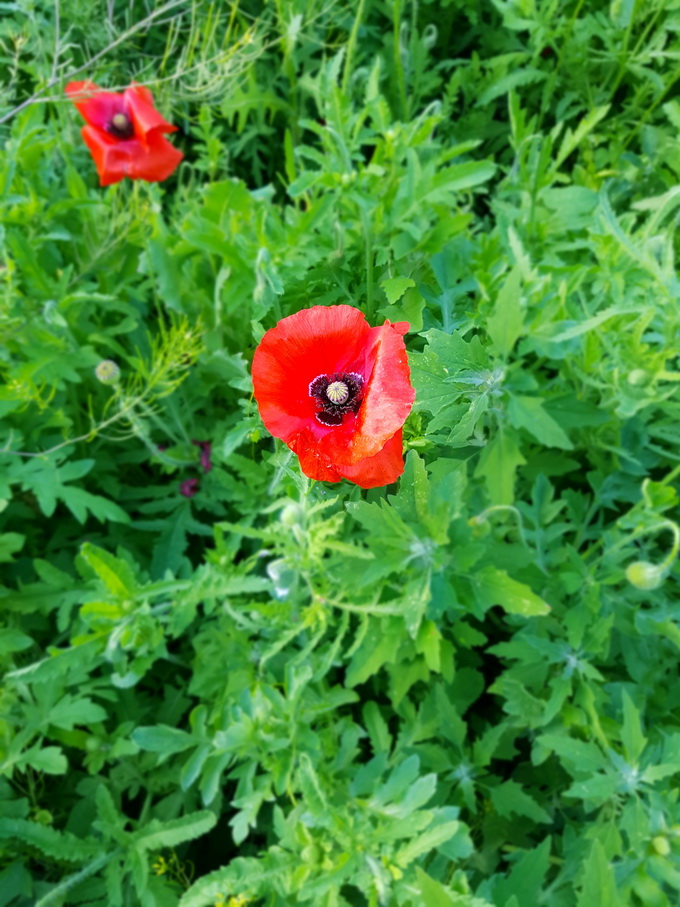Samsung galaxy s7 diving in water. Galaxy S7 fell into water – does its water protection help? Galaxy S7 water resistance level

Over the past 10 years, I've tried a huge number of phones, some of them lingering in my pockets for several months.

Today, when Samsung has started selling the 8th generation Galaxy with the letter S, I can happily remember my beloved Galaxy S2 of the 2011 model year, its incredible Amoled screen, formal outfit and convenient home button.

That device was my main smartphone for quite a long time, but I no longer liked the Galaxy S3 because of the shiny glossy plastic and the shape of the soap dish.For a couple more years I watched the company evolve in terms of hardware, but the S4 and S5 were not inspiring due to the ubiquitous plastic in the body and strange design.

The Galaxy S6, and especially the Edge version, was again a breakthrough, but I returned to Samsung only after 5 generations of gadgets - last year I settled on the S7, which subjectively seemed the most beautiful and most sophisticated device of its time.

I didn’t attend the New York presentation of the S8, and for the first time I held the 8 in my hands at a similar enterprise in Moscow. I can say that Samsung did the almost impossible: despite the fact that the S8 largely repeats the previous generation, it looks so unusual and cool that almost all other smartphones from any manufacturer look somehow pathetic and not modern against its background.

It seems to me that this is a kind of transitional design between outdated rectangular smartphones and flexible gadgets like bracelets that will be worn on the wrist in a few years.

The slogan of the 8 was the slogan “smartphone without borders,” which seems to hint at the huge screen that fills most of the front panel, which is why the device even lost the mechanical button at the bottom of the display - now it is virtual.

The device itself is almost symmetrical on top and bottom, front and back, and in the “black diamond” color with the screen turned off, it is almost impossible to distinguish the top from the bottom.

Previously, the body had accents like a mechanical key under the screen or a slightly protruding camera module, but now everything is smooth and smooth, and it is almost impossible to blindly determine the orientation of the gadget.

The glass case, despite the fact that it looks extremely elegant and has a good oleophobic coating on both sides, is very slippery.

I think that most users will hide the device in a case one way or another. I made a real discovery for myself: there is a proprietary Samsung2-Pieces Cover, which literally can be attached as “two halves” that are attached to the lower upper part of the case.

In my opinion, this approach solves at once no less, but 4 problems. Firstly, protecting the corners and bottom glass of the smartphone from contact with the surface.

I think that even if it falls on one of the ends, the case will have a much better chance of remaining intact.

Secondly, the pads are made of soft-touch plastic, and the finger does not slip on them at all.

Thirdly, it has become more convenient. And that's why. Due to the large screen, Samsung moved the finger scanner to the back cover, but they chose a not very convenient place - next to the main camera lens. The heart rate sensor unit and the flash on the other side also add fuel to the fire.

It's all almost flat, and it's almost unclear to the touch where the scanner is when you pick up the phone. So, the overlay adds relief and allows you to accurately locate the scanner with your finger, and you can use it comfortably again.

Fourthly, two light pads almost do not spoil the appearance of this beauty, and holding the S8 in your hands you continue to feel the texture of the case and how thin the device is.

As a bonus, I’ll add one more observation - the pads form a small step on the body, which is convenient for lifting the smartphone out of your pocket.

In general, Samsung pleases with various unusual nuances and small “goodies”. For example, in the box, in addition to the cable, high-speed charging and cool headphones from AKG, there was room for an adapter from microUSB to Type C, so that your old cables could still serve with the new connector on the case.

There is also an adapter labeled USB connector, which connects to the S8 on one side, and on the other - you can plug any smartphone on Android and IOS into it with its own cable, and using the Smart Switch application, transfer pictures, SMS, notes and photos without all kinds of cloud synchronization and “dancing with a tambourine” - simple and elegant.

Well, ok, let’s move on to our main topic, it’s not for nothing that I’m dressed up in a robe and standing near the pool!One of the key features of the Galaxy S8 and S8 Plus was protection against water and small particles according to the IP68 standard, which was first tested on the last generation of gadgets.

At the moment, two categories of smartphones have such certification - some do not try to look elegant, and under the motto of protecting them from water, dust and dirt turn into truly immense bricks.

The latter are protected only from the penetration of water or dirt, but without emphasis on shock resistance. There are still very few such devices, and they can be counted on the fingers of two hands.

Now let’s talk a little more about the protection standard numbers themselves. So, in the abbreviation IP67, the first number is protection against small particles, that is, dirt and dust, and the second number is against liquids. “Six” means the most complete protection from dust, provided that the case is intact and the technological connectors are closed. But with water it’s more interesting.For IP67, protection against temporary condensation is provided, protection for partial or short-term immersion for up to 30 minutes to a depth of 1 m, continuous operation during immersion is not permitted.

While IP68 is full protection against pressurized water, prolonged immersion to a depth of more than 1 m for more than 30 minutes and the ability to operate in submerged mode. Today only Korean and Japanese flagships, like the LG G6, Sony XZ premium, and our Samsung S8, have maximum protection with index 8.

The iPhone 7 has a protection standard of IP67, that is, prolonged swimming is contraindicated for it. And yet, one of Apple’s arguments for abandoning the audio jack in the 7 was precisely water resistance, but this is disingenuous, since devices even with a higher level of certification have such a connector on board, which does not prevent them from passing liquid further - they just poured it out water from the hole, dried and used further.
It is important to note that by protection from water, manufacturers mean fresh water. The disclaimers say something like this: do not expose to contact with sea, salt, chlorinated water or alcoholic beverages.On my own behalf, I would like to add that there is no need to take such a smartphone with you to a Turkish bath or hammam: the temperature there is quite aggressive, and various detergents are used.
What to do if, say, you dropped such a gadget into the sea? In principle, nothing bad should happen: just wash the device under fresh water and wrap it in a dry towel.The same applies to prolonged contact with salty splashes, the main thing is to wash and clean them after that from the contacts of the charger and the headphone jack.

Returning to the Samsung S8, I would like to note that it is not at all necessary to wait for the power connector to dry after swimming, since the device supports wireless charging.
About the camera. Subjectively, I did not find any significant differences in the S7 and S8 cameras, except that in the dark the shooting algorithms became less aggressive, and the contours of small objects are drawn softer.

The dynamic range of the matrix is very pleasing:

Click on the picture to download the original
As before, thanks to the excellent aperture of the F1.7 lens, the automatic does not increase sensitivity during normal shooting, and macro photographs come out with a gorgeous background blur effect.

Click on the picture to download the original
Here is an example with automatic addition of HDR:

Click on the picture to download the original
Here's a shot against the light:

Click on the picture to download the original
Sometimes I even deliberately lower the exposure a little when shooting at night, because this makes the dark and light areas of the frame even more contrasty:

Click on the picture to download the original
And here is the choice of automation at sunset:

Click on the picture to download the original
For dessert, here’s an example of an underwater photo taken with automatic settings:

Click on the picture to download the original
I caught myself thinking that such an elongated screen requires the same elongated picture in the viewfinder field.

To do this, I switched the aspect ratio from 4k3 to 16k9, although the resolution of the images drops from 12 to 9 megapixels, but, objectively, this does not affect the quality in any way.

It is also worth noting the “smart” HDR auto mode, which itself decides whether it is necessary to expand the dynamic range of the image or whether the highlights and shadows in the frame field are all within normal limits, as well as the auto-correction button for finished images in the form of a magic wand.

In 7 cases out of 10, after pressing it, the finished photo will become even more impressive, and for not very experienced photographers such help will not be superfluous.

Now let’s talk about how to use the device when in contact with deep water. First of all, it is worth noting that under water the touch screen either does not respond at all or does so inaccurately.In this regard, it is necessary to activate various functions for controlling the device using buttons. For example, during a call, you can answer it by pressing the volume up key and end the call with the power button.

The camera is activated by double pressing the same power button in locked mode, and you can take pictures when the camera is running using the volume buttons.

Selfie lovers will also appreciate the ability to take pictures with the front camera, if the face is recognized and highlighted with a square - just click on the fingerprint scanner on the back of the device.
Speaking of the scanner. It is no secret that after prolonged contact with water, when the skin on the fingers softens and becomes deformed, the scanner stops working correctly. Previously, we would have had no choice but to try to type a PIN code on the screen with wet fingers, but now we have an iris scanner in our arsenal and the possibility of contactless identification.It works very cool.

We take the device, click on the virtual Home button at the bottom of the screen and hold the smartphone in front of our face at a distance of 25-30 centimeters. Almost always, with or without glasses, day or night, recognition occurs correctly in almost a second thanks to infrared illumination.

The iris scanner does not work if the glasses are too reflective or the face in the frame moves, for example, while walking, the system cannot match eye patterns that were saved earlier.

In the comments, I was asked a question about how to write a video underwater if the screen is difficult to listen to and the volume button only works on photos. I think that the easiest way is to start shooting while still above the water, and only then lower the device below the level. In the end, such a transition can look very impressive, or it can be cut off during installation as unnecessary.

It’s also very beautiful to write slow motion with water and splashes, or slow motion with a high frame rate. The video is recorded at 1/8 of normal speed and 720p resolution, and it looks very impressive. An example of such shooting can be found in the video version of the review at the end of this text.
One of our subscribers came up with a rather succinct description of the new product, saying that the S8 is a pumped-up S7 on steroids. I agree with this, but only partly.

In principle, the S8 really resembles last year’s S7 in many ways: in materials, in the curvature of the screen, and in camera resolution.On the other hand, the device has become more interesting in all respects. Take the fact that it is 1.5 mm narrower than the S7 Edge and weighs the same, while the screen size has grown from 5.5 to 5.8 inches.

The S8+ is much bulkier, and for me personally it’s a bit redundant as a phone, but for those who want to get both a smartphone and a tablet “in one bottle,” this is what you need.
And finally, about battery life. Despite the fact that the physical capacity of the S8 battery is less than that of the S7Edge, Samsung managed to achieve approximately the same level of autonomy due to the new processor and advanced software, although an extra 500-800 mAh would definitely not have hurt it.

The only thing that I accepted without enthusiasm was the inconvenient location of the finger scanner, which I was unable to adapt to after 2 weeks. However, the S8 can recognize you by your eyes, and you can put up with that too.Otherwise, and I say this absolutely sincerely, this is the most sophisticated and technically advanced smartphone of the first half of 2017 in terms of all its characteristics, and again, like a year ago, I remain with the Galaxy S as my main gadget...
Video version of Samsung S8 review:
The Galaxy S7 Edge smartphone from Samsung is perhaps the most original and at the same time the most expensive smartphone offered on the market today.
The device combines a huge number of different innovative functions. And yet, during the testing process, we decided to concentrate only on the most important and unusual characteristics - design, camera and moisture protection. These three parameters really make this model stand out from many other gadgets. But is the curved display worth it?
And what does IP68 moisture protection actually provide? And how good is the camera in this ultra-expensive smartphone? In other words, if you're traveling, should you take a traditional compact camera with you, or can you get similar quality photos using a smartphone camera?
Devices with a curved display surface appeared several years ago, and it was Korean manufacturers who became the pioneers in this segment. But if LG curved its Flex around the transverse axis, Samsung slightly rounded the side edges of the display along the longitudinal axis. The result is a very stylish and unusual appearance, in comparison with which smartphones with a regular flat screen look somehow simple and even, to some extent, archaic. In addition, the manufacturer has added a special software function for the user interface to the Edge series of models. Galaxy S7 Edge - not the first Samsung model with a beveled screen. Before this, there was the S6 Edge Plus with a similar profile. However, the new model has a number of important improvements and advanced features. For example, what is it worth at least microSD card support (up to 200 GB, according to the manufacturer), upgraded camera, 3600 mAh battery and IP68 waterproofing
. In addition, it is worth noting the option for the display to run in the background (always-on mode), which makes viewing various notifications more convenient.
As for the parallel announced flagship model Galaxy S7, its technical characteristics differ little from the Samsung Galaxy S7 Edge. The main difference is a smaller screen diagonal (5.1 inches versus 5.5) and a less capacious battery (3000 versus 3600 mAh). And, of course, the Galaxy S7 display is completely flat, without beveled edges.
The most important design feature of the Galaxy S7 Edge is its rounded edges. The radius of curvature is about 5 mm. Below the screen there is a hardware Home button (it also has a built-in fingerprint scanner), above the screen there is a front camera, speaker and proximity sensor. On the bottom edge there is a headphone jack, a microUSB connector, a loudspeaker and a microphone, on the top there is a slot for installing a SIM card and a microSD card, as well as a noise-canceling microphone. There is a volume rocker on the left side, and only a lock button on the right.
What benefits does an Edge model get? Samsung developers have written several software functions specifically for this model. For example, by swiping from the right edge of the screen to the center opposite the lock button, the user can display the panel Tasks Edge with quick access buttons to certain program functions, panel Apps Edge with quick access to the programs you use most often via the side screen, a list of contacts from the phone book and a selection of news.

Design of the Galaxy S7 Edge: on the one hand, stylish and original, on the other hand, the side edges are sensitive to touch, which is not always convenient when working with the phone
By default, only 4 Edge panels are connected, but in the settings you can additionally add a summary of sports, financial news (though only in English, based on Yahoo materials!), a panel with travel applications such as a compass, ruler and flashlight, weather reports and other applications.
It is noteworthy that the screen Edge works even when locked. For example, in the Always-on mode on the right edge you can display the date, time and battery charge, in addition, you can read various notifications, as well as news. The range of panels is extensive, and you can customize their location, size and transparency.

The Samsung Galaxy S7 Edge has a microSD card slot. But you can’t install a second SIM card in this particular model.
Obviously, an Edge-type pop-up sidebar can be implemented on a smartphone with a regular flat screen, but it would not be as convenient and stylish. But the following function is only possible on a device with a screen with rounded edges: when the smartphone lies face down, its side is pulsating purple, orange or other color, notifying you of a call.

Tasks Edge panel lets you view SMS messages without unlocking
All of the above can be attributed to the advantages of the Edge model. What about the disadvantages? Some discomfort due to the need to take the smartphone extremely carefully by the side edge. Actually, a gadget with a touch screen in an unlocked state should always be taken carefully so as not to accidentally launch any application or even dial a number. However, there was a good rule for novice users - any touchphone can be safely held by the side edges. Regarding the Galaxy S7 Edge, not everything is so simple, because even the side edges are sensitive here. To this feature of the device it will take a long time to get used to and it’s not a fact that you’ll like it.
Moisture protection and underwater photography
The Galaxy S7 Edge is IP68 waterproof, meaning it can be submerged depth less than 1.5 m for up to 30 minutes, plus complete dust resistance. The MicroUSB connector, as well as the microphone holes, speaker and other elements are isolated from water, and no plugs are required. The only thing is that it is important to check that the cover of the SIM and MicroSD card slot is tightly closed. After which the smartphone can be safely dipped into water.

We admit that it was not so easy to decide to drown the most expensive smartphone on the market. But the technology did not disappoint
Under water, the capacitive touch screen begins to behave inappropriately: the display practically does not respond to finger presses, but they can various applications launch randomly and windows open spontaneously. But the hardware buttons work quite correctly, so you can take a photo or video underwater: When you double-click the Home button, the smartphone goes into photo shooting mode, and when you press the volume rocker, the shutter is released or video recording starts (depending on what is set in the parameters). But even in this case, the uncontrolled behavior of the touch screen sometimes leads to annoying situations when video recording suddenly turns off, or switches to another mode. For example, one of the tests of underwater video shooting unexpectedly led to the digital zoom being turned on at full strength.

When you pull the device out of the water, the display comes to life, but, as in any other smartphone with capacitive sensor technology, it does not behave particularly correctly until it dries. In general, the Galaxy S7 Edge would be much more convenient to use underwater if the manufacturer provided for a special underwater mode (activated by, say, pressing the Home button four times), in which the touch screen is blocked from any pressing.

The device takes good pictures underwater, and you can also get very impressive pictures at the “junction” of air and water: when the smartphone is almost in the water, and only the camera is a couple of centimeters above the water. However, the device needs water protection not only for underwater photography- it is also very important that you can take excellent above-water photographs, say, standing in the water on the beach. Moreover, it is possible Don’t worry at all about the “health” of the device, because even if splashes of water heavily flood your smartphone, it will not harm it in any way. In general, reliable moisture protection is now in trend - according to rumors, the new iPhone 7 will also be maximally protected from water and dust.

Very spectacular pictures can be taken at the “junction” of air and water (click on the image to view the original photo)
During the testing process, our editors conducted an unusual experiment by playing a video with sound via YouTube and immediately immersing the phone in water. The results are as follows: playback continued without problems, but the sound instantly became quieter, which is quite logical. After removing the phone from the water, the side speaker wheezed for some time until it completely dried out, after which everything The audio characteristics of the phone have been completely restored. By the way, the speaker takes a long time to dry, so it is better to blow it out immediately after taking the phone out of the water.
Sample video shot underwater and above water
Video shot at 240 fps and then slowed down to standard speed. An important advantage of a device with IP68 protection is that you can shoot in water and not have to worry about the “health” of the device at all.
Need to recharge? No wires
The development of wireless charging technology for smartphones Qi (“Chi” or “Qi”) was announced back in 2008, however, there are still very few devices that support this charging method (mostly such devices are produced by Samsung, Huawei and LG) and usually this premium segment products. Let us recall that Qi is a standard for inductive energy transfer over a distance of up to 4 cm; the technology uses electromagnetic induction between two flat coils. One of them is the base and is connected to the energy source, and the second is inside the device being charged and is the receiver.

Qi technology uses electromagnetic induction between two flat coils
The advantage of wireless charging is convenience, because you don’t need to insert a miniature plug into a miniature hole, and even guess with the correct side. Everything is simple here: place the device approximately in the center of the charger - and charging starts automatically. The disadvantage of this technology is wireless storage recharges battery slowly, and the process itself takes much longer than with a wired connection.

Just place the device approximately in the center of the charger - and the charging process will start automatically
It is worth noting that Samsung introduced wireless chargers of its own production last year (for the Galaxy S6 model). The charger is a plastic “puck” that can be connected to a standard power adapter with a microUSB connector (technical requirements: output current 2A and 5V). If the smartphone is placed on the “puck”, the charging bezel begins to glow.

Fully charge Samsung Galaxy S7 Edge with 3600mAh battery using wireless charging took 3 hours 35 minutes. For comparison, when wired connection and when using an identical power supply, the smartphone was fully charged from scratch in 1 hour 55 minutes. And it took just 1.5 hours to charge up to 80%.
Megapixels at gunpoint
A fundamentally new camera with a high-quality sensor is the pride of the Samsung Galaxy S7 Edge. A number of innovations allowed the developers to achieve amazing (for this size) image quality. Firstly, the camera uses proprietary Britecell technology, which allows you to take excellent pictures in low light conditions. Secondly, the developers reduced the number of megapixels to 12(the S6 model used a 16-megapixel main camera) and thereby achieved a low noise level. The pixel size of the new sensor is 1.4 microns.


Regarding reducing the number of pixels, it is worth recalling the following rule: an increase in the number of pixels in the camera’s resolution characteristic should grow along with the size of the sensor matrix. If the matrix area and lens quality in two camera models are identical in size, but in one of them the number of pixels has increased, then most likely this will only add noise, but not at all will not improve picture quality. Therefore, neither manufacturers nor consumers should still chase the number of megapixels.

For faster focusing in the S7 Edge matrix - first time on camera phone- Dual Pixel technology is used. Essentially, this is an improved phase detection autofocus, which involves dividing the optical path into two channels and then comparing them. Focusing is done based on an analysis of the phase difference between these two channels. Typically, a special sensor is responsible for this function, which is located near the matrix at a similar distance from the lens.

Samsung Galaxy S7 Edge: night photo. Click on the image to view the original photo
Night video sample captured with S7 Edge
Previously, this method was used only in full-size SLR cameras, because required the use of additional sensors and their precise location. But the trend towards smaller semiconductor components has made it possible to install sensors directly on the matrix. But as a rule, only 5-10% of the total number of photosensitive points are equipped with such sensors. IN Galaxy S7 Edge has become possible to equip each pixel with a separate sensor. Thus, each effective pixel on the sensor surface consists of two independent photodetectors, which capture the light flux reflected from the object to perform phase detection autofocus. This approach ensures high speed and focusing accuracy.

Macro photography in daylight. (Click on the image to view the original photo)
The lens aperture in the S7 Edge camera has increased up to f/1.7 and this is a very good characteristic that is found only in expensive interchangeable lenses for DSLRs. In practice, this means the ability to “blur” the background when taking portrait or macro shots, as well as get a good shot in poor visibility conditions.

The lens is equipped with optical image stabilization. The LED flash here is only single, but very bright.

Food photography mode: the object in the center is in focus, everything else is blurred. In addition, the image has been converted to a warmer image.

The S7 Edge camera supports recording in RAW format, which provides additional opportunities for image processing. Although it is unlikely that you will need to use this function often. Firstly, working with RAW requires some experience and knowledge. Secondly, sometimes the camera’s built-in JPEG converter generates photos better than manually “pulling” them from RAW (besides, RAW files are large and take up a lot of space on the memory card). But the presence of the RAW format already indicates that the camera’s characteristics are above average. Cheap cameras usually don't support RAW.
Video collage: 4 different 6-second videos combined in one frame
It is worth noting that the S7 Edge photo module uses many software technologies to process and improve photos, which significantly affects the quality of the final image. The device supports ten shooting modes, the most interesting and unusual for a smartphone (from our point of view) are described below.
The world through HDR
New generations of smartphones usually have a shooting mode HDR(High Dynamic Range - high dynamic range). In this mode, two (or more) photographs of a given object are taken in a row with different exposures, followed by software composition of these photographs into a single photo. But in what cases is it optimal to use such a function?
Everyone knows what happens if you take a photo of, say, the top of a building against a bright sky: it turns out to be too dark with little detail visible. Or, on the contrary, the building itself will look good in the photo, but the sky in the photo will turn into an overexposed white spot - depending on what exposure was chosen. Mode HDR allows you to combine two photos to create a single image, in which both the building and the sky are clearly visible.


The Samsung Galaxy S7 Edge camera supports shooting in HDR mode - it can be activated in the top menu of the camera. Moreover, this mode works great here and can be recommended for any landscape photography in the daytime - but try to shoot while leaning on some stable support or using a tripod. And you should not use this mode when shooting moving objects. As mentioned above, HDR combines multiple exposures of the same scene; but if these scenes are dynamic and changing, then in the end you can get a completely unacceptable result.
Choosing Focus
Another mode built on a automatic software combination of two serially taken photographs. The first shot is taken with the focus on the near object, the second - with the focus on the far one. Next, both images are combined programmatically and on the display you can select the photo with which focus you want to choose: near or far. Unfortunately, such photos can only be viewed on the display of the Galaxy S7 Edge itself; when downloaded to a PC and using standard tools for viewing images, unfortunately, you will not be able to select far or near focus.
Virtual tour
In this mode, you can get a photo of an object from 360 degree view. To shoot, you need to walk around the object, trying to keep it strictly at one point in the frame. The output is a 3D model of the object, which can be rotated around an axis by touching the display with your finger and viewed from any side. Again, when downloading to a PC, the effect of the virtual tour is lost.
Time-lapse video
The Samsung Galaxy S7 Edge is equipped with a very interesting and unusual time-lapse photography function for a smartphone (also called “time-lapse photography”). In fact this is a type time-lapse slow motion, and the intervals between taking frames are equal. In the time-lapse mode of the S7 Edge, the video shooting speed is slowed down by 15-30 times compared to the standard one - depending on the degree of lighting, the slowdown parameter is selected automatically and is not manually adjustable.
Time-lapse mode: shooting a 30-second video required about 30 minutes of shooting. The rainbow is visible for the first 5 seconds - in fact it was visible for about 5 minutes.
Thanks to the time-lapse mode, you can film processes that occur relatively slowly, for example, the movement of clouds, sunrise and sunset, melting ice, opening of a flower bud, etc. It is worth noting that time-lapse photography undergoes subsequent software processing, which is designed to improve the quality of the final image . For example, the “shaking” of objects in the frame, caused, for example, by the fact that wind-swaying trees were included in the frame during shooting, is removed.
It is, of course, unrealistic to shoot high-quality video “hand-held” in time-lapse mode. Necessary use a tripod, or securely fix the smartphone in some other way.
QuadHD display - why is it needed?
The Galaxy S7 Edge is equipped with amazing quality 5.5-inch Super AMOLED display that supports resolution 2560 x 1440 pixels(Quad HD). The pixel density is 534 ppi. It would seem - why so much? After all, flagship devices from other companies usually contain displays with a resolution of no more than FullHD (for example, the pixel density in the iPhone 6s Plus is 401 ppi). And the difference between FullHD and QuadHD is almost invisible to the eye.

The good thing about mobile photography is that a smartphone is almost always at hand, and this allows you to take many more cool and unexpected shots that would not be possible to take with a compact or SLR camera. However, there are situations when even the most versatile shooting tool faces limitations. Recently I was in a water park and noticed that in such a dangerous place for smartphones, people are still not ready to give up filming and try to take photos of themselves and their loved ones. But they all have to sacrifice successful angles, standing away from water and splashes - there are almost no people willing to risk their devices for successful shots. With the new Samsung Galaxy S7 there will be no such problem, because it is reliably protected from water. And a pleasant bonus will be the envious glances of those who are forced to stay away with a smartphone or camera while you take spectacular selfies in the middle of the pool and even underwater.

What is important is that Samsung does not use plugs on the ports, which can become loose and lose seal during use. A microUSB port, a 3.5 mm audio jack, a dual tray for a SIM card and microSD - all of this has a familiar design and appearance. However, the manufacturer guarantees protection against water and dust according to the IP68 standard. Before the start of sales, the Samsung Galaxy S7 underwent a series of laboratory tests that confirmed the protection of the device in various situations: vertical drops, horizontal jets of water and complete immersion to a depth of 1.5 m for 30 minutes. As for dust, a special chamber with talc is used for tests, the concentration of which is 2 kg per cubic meter. The smartphone also copes well with the “dusty” test, even if the owner is unlikely to ever find himself in such harsh conditions. If we talk about the technical implementation of protection in the Samsung Galaxy S7, it is worth mentioning the very high-quality assembly of the case, which does not allow moisture and dust to pass through, the use of stainless metals in the connectors, as well as a special elastic sealant with which the smartphone is covered from the inside on the assembly line.

As for shooting, you won't be able to use the touchscreen underwater, so you'll need to use the volume button to take photos. However, it is worth keeping in mind that if you completely submerge your Samsung Galaxy S7 in water, spontaneous screen taps may sometimes occur. This is a feature of capacitive displays operating under water, nothing can be done. To avoid this, we recommend using a timer. In this case, the screen will be blocked from accidental clicks, and as a bonus, the smartphone will take several frames at once so that you can choose the best one among them. We also recommend experimenting with manual camera settings to get stunning shots. Typically, water parks are light enough for you to get very bright and clear photos in automatic mode, but if you want to take a photo of a downhill slide or capture spectacular splashes, we recommend forcing a slower shutter speed. Now look at a specially prepared gallery with photos that we took with a Samsung Galaxy S7 at the water park.
Even at the presentation stage, the iPhone 7 was declared waterproof and protected according to the IP67 standard, which essentially means that the smartphone can be safely immersed in water to a depth of no more than 1 meter, and for no more than 30 minutes.
But many users are interested in the question: is it possible to wet the seventh in different waters, including: pool, sea, bath. We tried to figure it out.
1. Immersion in the sea for a day
The harsh author of this video immersed an iPhone 7 in the Dead Sea for as much as 24 hours. What happened to the iPhone? Within a day, the battery in it was discharged, but after the author removed it from the water, dried it and charged it, the device worked again!
It would seem that the water is very salty, the smartphone lies in it for much longer than 30 minutes and the contacts will probably oxidize, or maybe it won’t turn on again? But no, the iPhone 7 withstood this test.
I would like to say hello to Samsung engineers, who assure that their Galaxy S7 cannot be dipped in salt water
Visually, all functions work perfectly, but time will tell how long the device will survive after such a dive is another question. Well, an additional proof will be the following video, where fish are filmed in the Red Sea on an iPhone 7. Purely visually, the depth here is about a meter, and the dive is about 2 minutes.
2. iPhone 7 in the pool
So now it's time to put your smartphone in the pool. The author of the video tries to swim with an iPhone in the pool. One of the features is that the water is well chlorinated, which also creates an additional danger to all metal elements of the device.
In such conditions, you can make a beautiful Slow Motion video, for example, when you jump into a pool, the main thing is not to drop your iPhone on the tiles at this moment.
The result is that the device withstood all the dives perfectly and even shot excellent videos that you can show to your friends.
3. Full test at maximum depth
For these purposes, he built a huge vessel, into which he poured fresh water and placed the apparatus there. The depth turned out to be 1-1.5 meters. To complete the test, a Samsung Galaxy S7 was also added to the container.
After 37 minutes, both devices were removed from the water and were functioning perfectly. But it’s worth noting that during the dive process, the screen of the iPhone 7 glowed, and the Galaxy S7 went out and it seemed that it had turned off, but no, after removal the device continued to work.
So is iPhone 7 waterproof or not?
Now you can answer this question yourself. We tried to look at IP67 protection from different angles and collected all the information on the topic for you. Is it worth buying an iPhone 7 for the purpose of “going on vacation to the sea and filming fish”?





